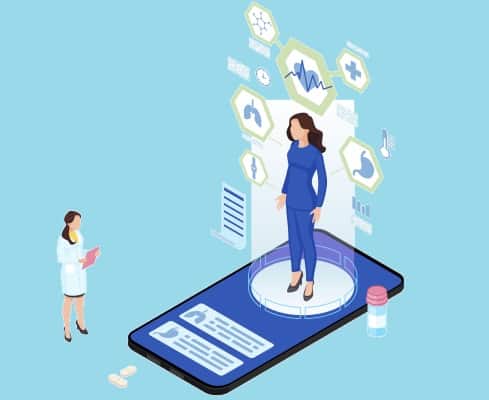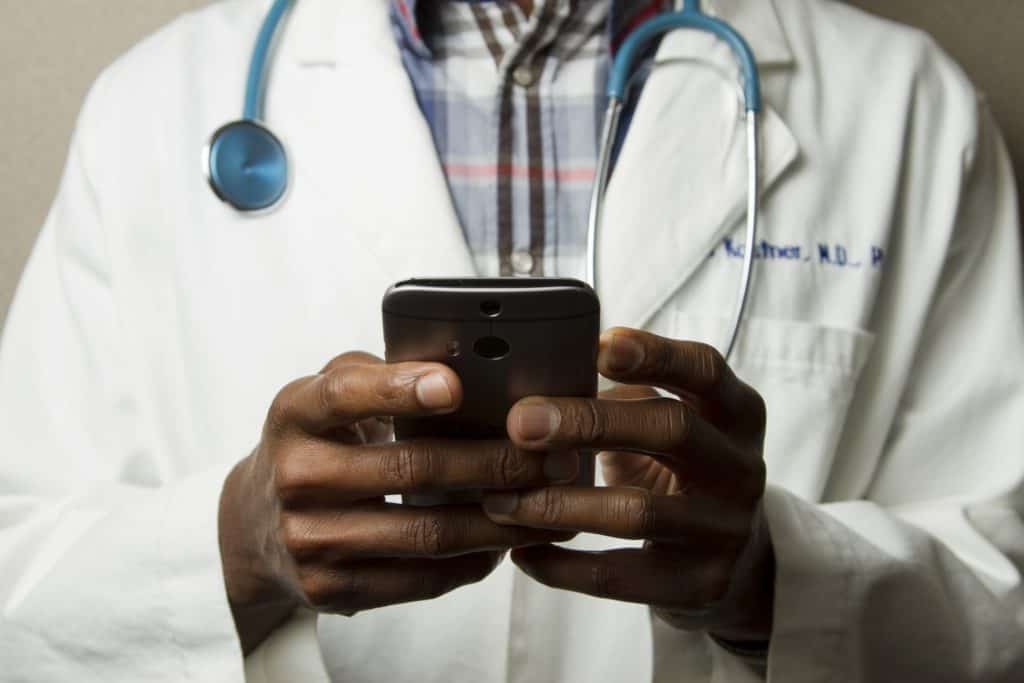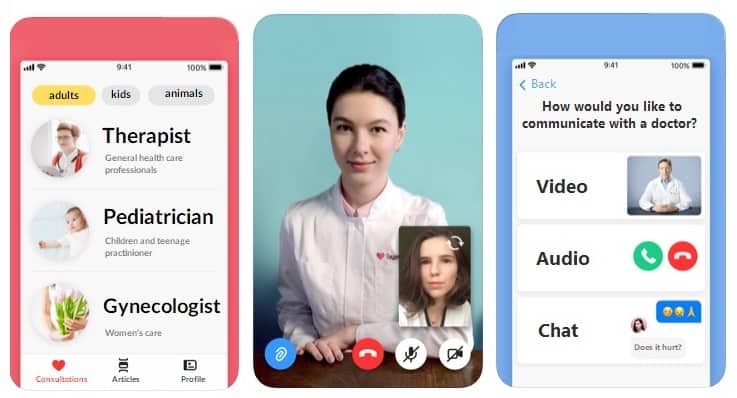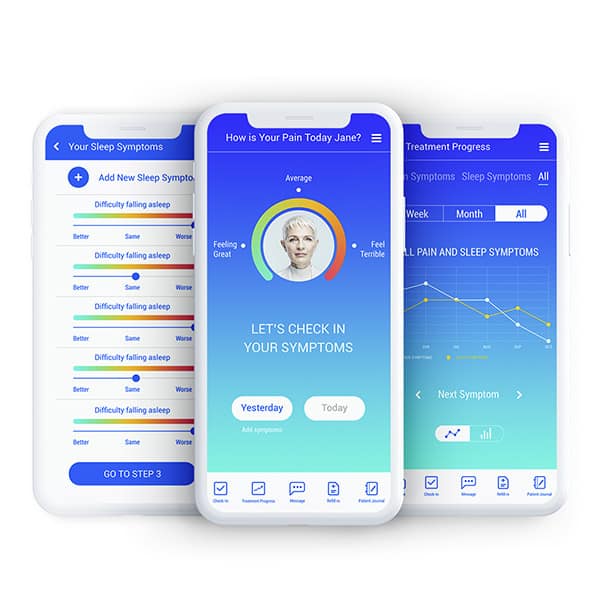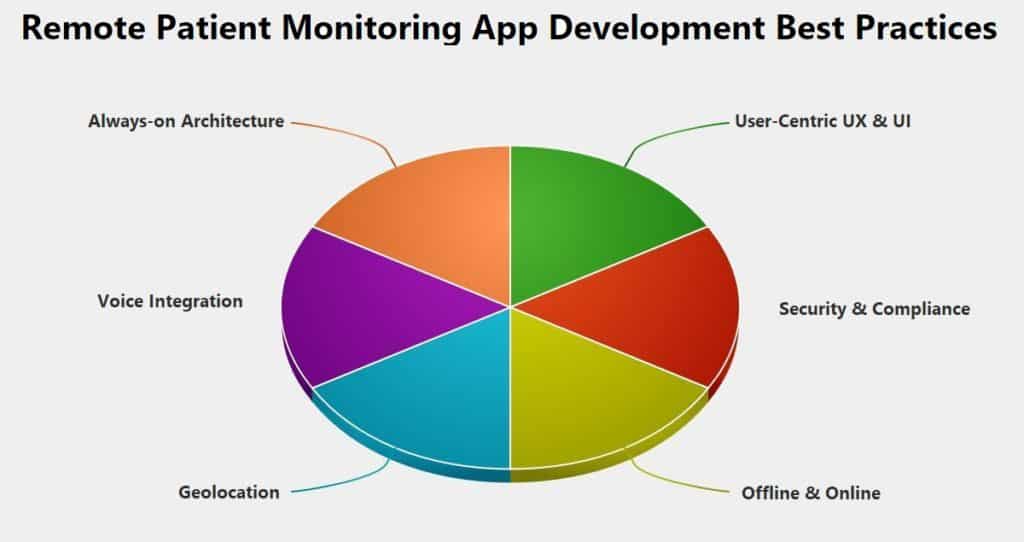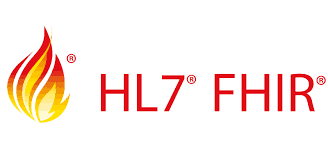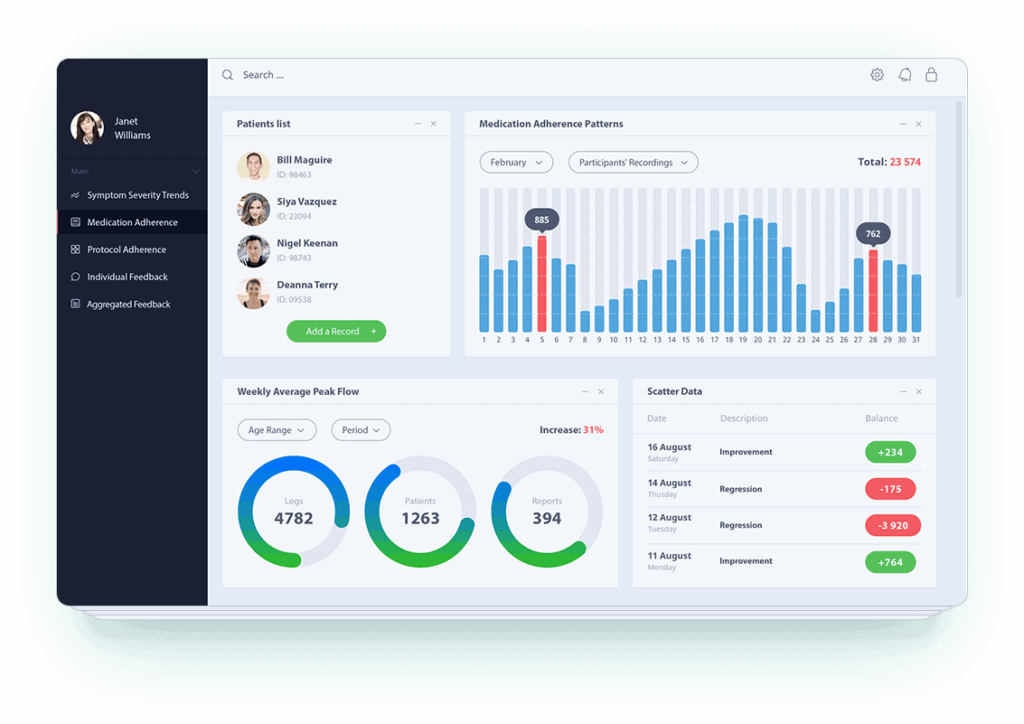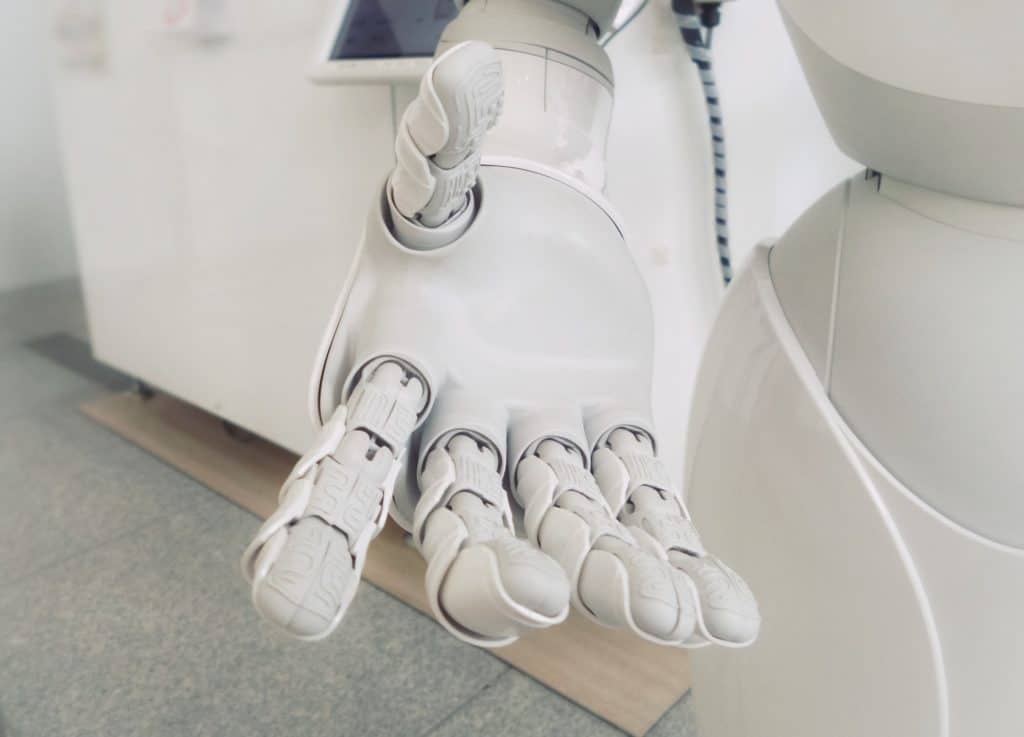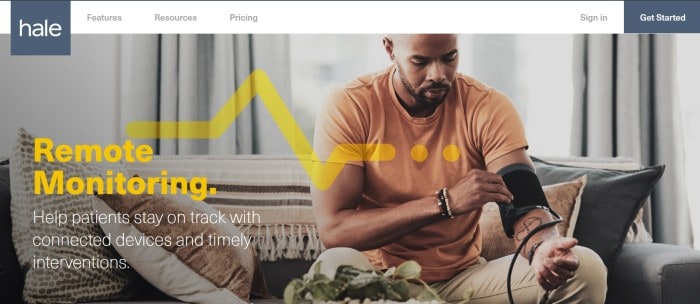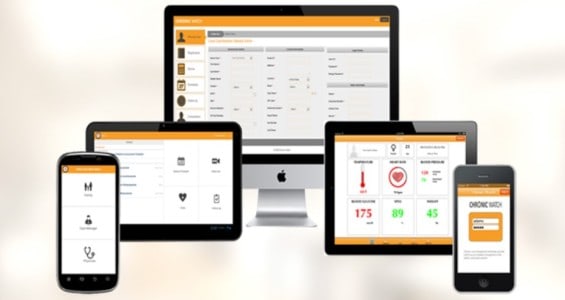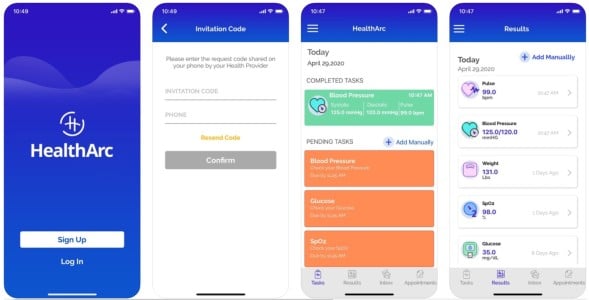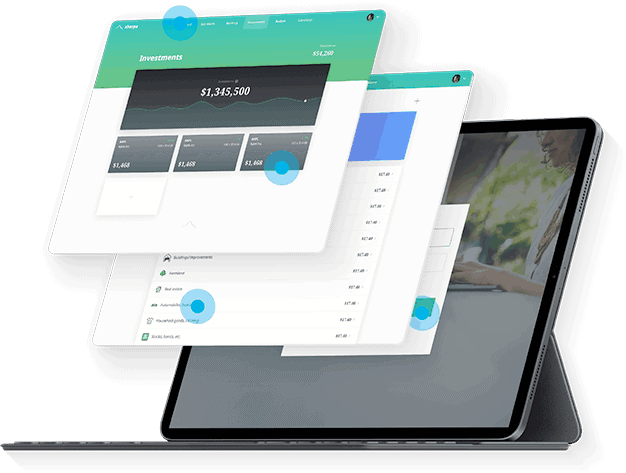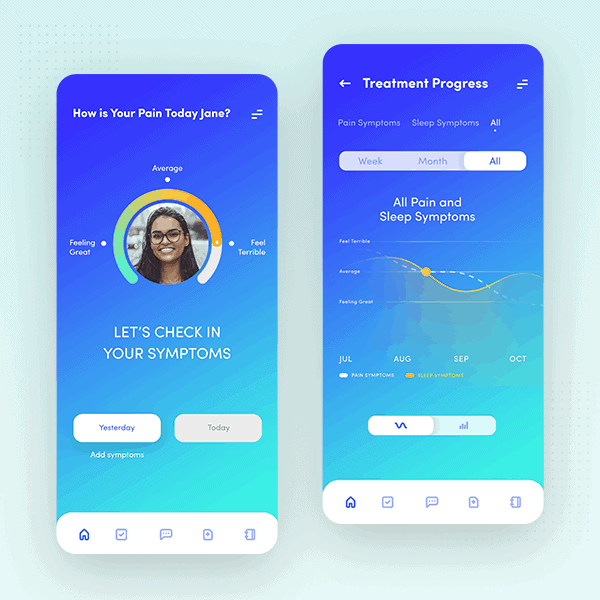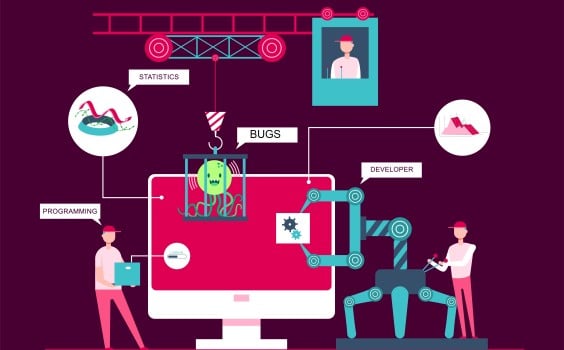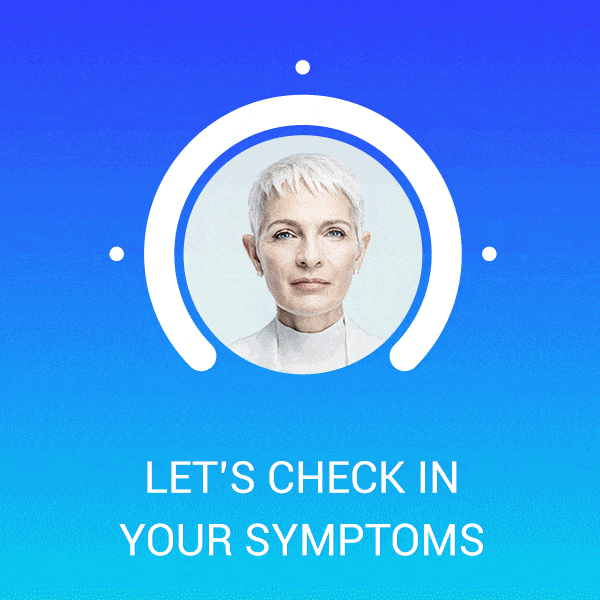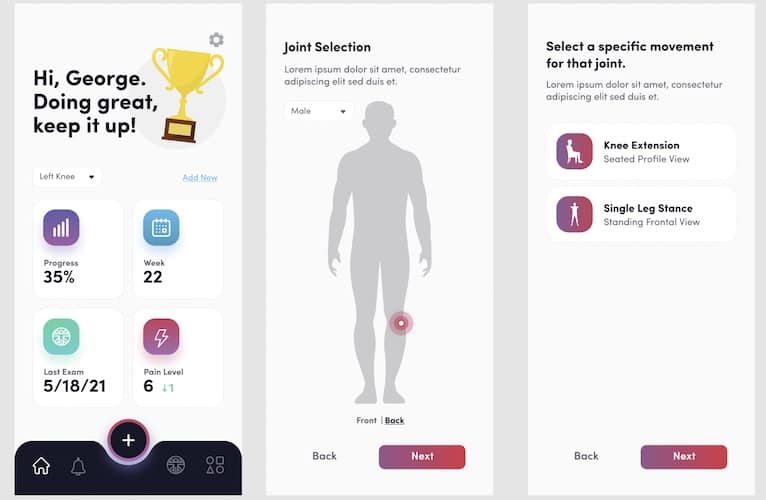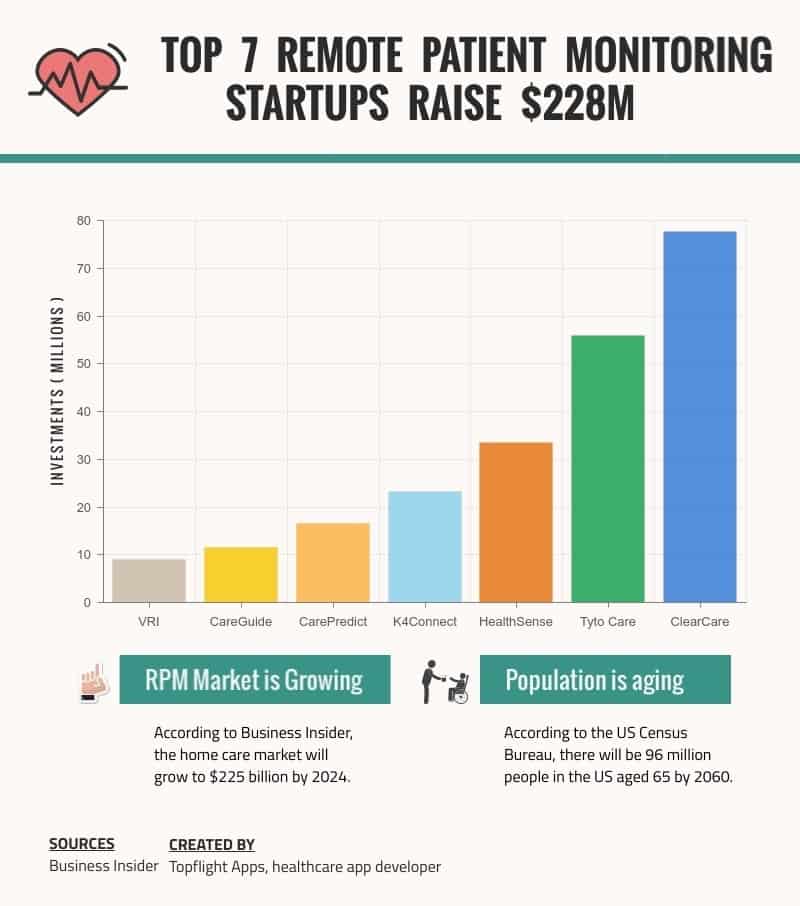Modern medicine could use some help from remote patient monitoring apps (aka RPM apps). An app that allows doctors to monitor patients remotely and keep track of their vitals is an enormously compelling option in times when healthcare services remain in strong demand, hospital stay costs continue to skyrocket, and COVID-19 keeps lurking around.
So it’s no surprise that both incumbents and startups are quite active in this space. Jump to the footer to find out the investment potential of an RPM startup or keep reading to learn how to develop an effective remote patient monitoring app.
Table of Contents:
2. Types of Remote Patient Monitoring Apps
3. Remote Patient App Development Best Practices
4. Key Features for Your RPM App
5. Top 4 RPM Applications on the Market
6. RPM Development Proces: Step by Step
- Step 1: Start with rapid prototyping
- Step 2: Create a web app for medical personnel
- Step 3: Build a mobile app for patients
- Step 4: Follow security guidelines
- Step 5: Test everything and deploy to production
RPM Revolution
COVID-19, despite its evil nature, is the best thing that has happened to telehealth since the internet. The industry that was on track to spend $3 billion prior to the pandemic is now valued between $80 and $250 billion. And remote patient monitoring solutions are a huge part of this.
RPM telehealth apps have been on steroids since the crisis hit. We’ve had countless consultations with clinics and private practices looking for the best strategies to shift to telehealth remote patient monitoring.
Key facts about RPM apps in the post-COVID world:
- RPM is covered by Medicare, 23 state Medicaid programs, and numerous commercial payers
- RPM apps can be used for Medicare patients with acute conditions (and not only for those with chronic conditions as before)
- For the duration of the pandemic, RPM can be provided to new Medicare patients
- Forrester projects that virtual care visits will surpass 1 billion in 2020
And while we don’t have the exact statistics on the number of new remote patient monitoring applications that have appeared since COVID-19 stroke, we can glean from these data points:
- 75% of consumers are interested in getting virtual consultations
- telehealth claim lines increased more than 4,000% nationally compared to the last year
- providers are serving 50-175x the number of virtual visits
The takeaway is: expect RPM to become a long-term strategy for healthcare providers.
Types of Remote Patient Monitoring Apps
An RPM app’s primary function is to bring together a doctor and a patient so that the doctor can provide medical advice to the patient based on the user’s health data collected through the same medical app. What are some of the most common types of remote patient monitoring solutions out there?
IoT medical applications
IoT patient monitoring applications gather health data from wearables, various smart sensors, health trackers, and send them off to clinic personnel. This market of health monitoring gadgets is constantly growing. Therefore you must pick hardware that’s easy to connect to your RPM solution (read: detailed documentation for app developers and off-the-shelf HIPAA compliant video conferencing SDK/API kits would be required).
Check out our article How to Develop a Healthcare IoT App.
Questionnaires
Remote patient monitoring apps that gather patient data through a series of questions are also quite popular and require less effort than most IoT medical solutions, as no integration with sensors or other medical devices is required.
Telehealth software
Telehealth remote monitoring apps provide users with an option for video calls — a perfect opportunity to have a medical examination in the comfort of your home. Despite its visual simplicity — a regular telehealth solution doesn’t look much different from FaceTime — the telehealth functionality involves some serious backend development.
Precision medicine solution
This type of RPM programs includes medical apps that collect massive amounts of anonymous patient data for research purposes. A vibrant example is Apple’s new health studies that the company has recently launched on the back of the latest Apple Watch series. With such applications, there’s no interaction between doctors and patients.
Remote Patient Monitoring App Development Best Practices
Apply patient-centric UX & UI
The first challenge you’ll face when developing a healthcare app, specifically a remote patient monitoring app will be the user. Are there some limitations to how they can use the program? Do you need the accessibility SDK to make it more comprehensible to all groups of patients? These and many similar questions will invariably pop up as you move through the UX & UI design phase of RPM app development.
We recommend:
- Use a clean UI with few interactive elements
- Make the touch areas big enough for comfortable use from any position
- Include a lock screen widget to ease data entry
Learn more about online doctor app options to find the best platforms for virtual healthcare delivery.
Go easy on battery and memory consumption
Your RPM software must keep running without draining your smartphone’s battery too much. The patient data stream should never be interrupted, and so using available technology to decrease battery and memory consumption will always pay off.
We recommend:
- Use BLE technology to connect to wearables or other health trackers
- Make sure to notify the user when the connection is lost
- Implement a dark mode to consume less energy when in the foreground
Provision against connectivity issues
Another pitfall to avoid is the loss of internet connection. How do you notify the user? How do you not lose all the data that’s being gathered while there’s no internet connectivity?
We recommend:
- Build in a caching mechanism, so all health data is kept in the remote patient monitoring app until the connectivity comes back, and the solution syncs it to the cloud. Use tools like PINCache or NSURLCache for iOS and OkHttpClient for Android, or pick a platform like Firebase that supports caching out-of-the-box.
- Implement local notifications that work at specified intervals so that your RPM app does not depend on a server. In this case, the software will fire up a notification based on a timer, without any server interactions, even if it’s not currently running.
Make the app location-aware
Sometimes it makes sense to add the geolocation feature into such apps to make them location-aware. In one of our projects, we integrated a geo-fencing capability into the iFaint app that (among other things) determines user location and prompts the user to complete a survey if they are near a hospital. Apple Maps, Google Maps, or Mapbox are all excellent tools for making a remote patient monitoring solution location-aware.
Strategize for security and compliance
The only reason we don’t have security and compliance first in this list is that these attributes go with any healthcare app by default if it wants to make it to patients and doctors in the end. HIPAA compliance, HL7 and HFIR adherence, FDA clearance — all of these should be on your list when developing a remote patient monitoring product.
And don’t forget about the IEC 62304 standard if you plan to hook the app to a sensor, health tracker, or other monitoring medical device.
Experiment with alternative interfaces
Another viable option for this group of apps is enabling a voice interface, such as Siri, Google Assistant, Alexa, or IBM’s Watson Assistant. Many patients will appreciate the convenience of adding data to their remote patient monitoring software with a simple voice command. Consider playing back the health data to the patient and ask for a confirmation before writing it to the app’s database.
Key Features for Your RPM App
To develop an RPM app that offers improved outcomes and drives down the cost of healthcare services, you really need to ponder these key elements:
- how it will collect patient data
- how it will present the data to doctors and patients
- how it will allow for doctor-patient interactions
- how it will interface with patients
Patient data sources
As we’ve mentioned, RPM apps focus on collecting patients’ health data. iOS apps rely on HealthKit (plus ResearchKit & CareKit) while Android programs lean on Google Fit to get such data as heart rate, blood pressure, body temperature, weight, height, activity data, as well as clinical records. Note that HealthKit and Google Fit get most of the real-time vitals from wearables and smart sensors.
Another alternative is to source patient data from dedicated providers like Human API or Validic that provide a simple way to view and share patient health data from everywhere via secure APIs.
Yet another approach is to use a Bluetooth or direct Wi-Fi connection and pull vital signals into the monitoring app directly from wearables (like FitBit), sensors (like Walker Tracker), or accessories and medical devices (like a smart pillbox).
Integration with hospitals
The next logical step for a remote patient monitoring product is to transfer patient data to doctors, so they can assess the progress or deterioration of the patient’s condition and provide guidance. A remote patient tracking app would need a secure API to connect to a clinic’s EHR/EMR system, adhering to such healthcare standards as HL7 and FHIR.
Note that FHIR is gaining more popularity with healthcare app developers as it allows them to work with EHRs using a modern tech stack. And in case you’d opt to work with Epic’s health record system, there’s an open sandbox — Epic USCDI on FHIR — that’s available for development and testing purposes.
Related: How to Create an EMR/EHR Software
Also Read: SMART on FHIR Guide to Healthcare App Development
Presenting data to patients
Besides serving patient health data to a hospital, a monitoring app should motivate patients to keep using it by visualizing the data they are submitting. For instance, we added a health graph in a smart symptom tracker we developed. The chart allows patients to toggle displays based on time or symptom granularity (e.g., the severity of all pain symptoms vs. severity of headaches).
Doctor-patient interactivity
Video conference calls are a welcome feature in many remote patient monitoring apps. It can be rather costly when developed from scratch, but that’s probably true of any RPM feature. We discuss the cost to build a healthcare app in detail in a dedicated blog.
We prefer to stick with proven video conferencing SDKs that work cross-platform so that you can integrate telehealth with both iOS and Android apps: SendBird (HIPAA and GDPR compliance; plus ISO27001 & SOC2 Type 2) or Virgil Security with full end-to-end encryption (E2EE) security. Plus, these tools support real-time text chats.
Preventive care
Machine learning and AI capabilities in a remote patient monitoring app may seem like yet another layer, distancing doctors from patients. But in reality, the technology makes their interactions more efficient: AI with 24-hour access to real-time patient vitals can predict illness deterioration and schedule an appointment.
Modern AI features in patient monitoring solutions vary from face recognition to ECG analysis to “simple” algorithms, like a regression formula in one of the remote patient monitoring apps we developed.
Notifications
As you’d expect, timely notifications about a patient’s health are one of the critical aspects of a remote care application. What’s important, notifications should be available in sync for both parties (doctors and patients) on the appropriate platforms.
Patients get notified on a mobile app, while doctors may get emails and text messages along with updates in their cloud application. Note that to comply with HIPAA, user notifications must not include patient data.
Remote patient monitoring apps benefit from customized mobile app design and development to ensure compliance with health regulations.
Top 4 RPM Applications on the Market
Hale Health
Description: Hale is a remote patient monitoring platform that allows care teams to easily monitor key patient vitals, flag patients that require a clinician’s attention, and connect with a patient that requires intervention.
Hale works with hundreds of medical sensors and health tracking services, including both consumer and clinical-grade devices.
Notable features: Video calling, Apple Health integration, messaging, and educational materials.Platforms support: web and desktop (Windows and Mac) apps for providers and iOS and Android apps for patients.
Qardio
Description: Qardio offers a suite of medical devices that track such patient vitals as blood pressure, ECG readings, and weight. Doctors are provided with a QardioMD platform that offers dashboards with patient readings for analysis and seamlessly integrates with EHRs.
Notable features: automatic detection of irregular heartbeats, geo-tracking, notifications for friends and family members.
Platforms support: Qardio has made a significant effort to get on virtually any platform that patients may be using. They support Apple and Android-powered smartphones and tablets, Kindle Fire, and smartwatches.
Chronic Watch
Description: ChronicWatch is a chronic care management system offered both as a software-only package and as a complete turn-key solution. Like other similar solutions, the software fulfills all requirements to bill CPT code 99490 for each enrolled patient.
Notable features: messaging, automatic reminders for a survey, medications, etc.
Platforms support: ChronicWatch is cloud-based software available on desktop, Android, and iOS devices.
HealthArc
Description: HealthArc is an emerging leader in the world of connected medical devices, chronic care and remote patient monitoring platform effectively connecting patients with healthcare providers.
Notable features: on-demand EHR integrations, simple billing.
Platforms support: smartphone apps and a cloud platform.
RPM App Development Process
Like any other custom applications we develop, when we’re developing an RPM telehealth app, we meticulously follow the steps that guarantee the solution will have the best chances of succeeding. Here’s a quick overview of major development steps:
| Step | Description |
|---|---|
| 1. Rapid Prototyping | Create clickable mock-ups for patient mobile apps and clinician web apps. Test and adjust based on user feedback to save development costs. |
| 2. Web App for Medical Personnel | Develop a web app to store health data, notify clinicians of abnormal readings, and provide easy-to-navigate analytics for medical personnel. |
| 3. Mobile App for Patients | Build a mobile app for patients in parallel with the web app, ensuring seamless integration and a user-friendly experience tailored to different devices. |
| 4. Security Guidelines | Ensure compliance with standards like IEC 62304, ISO27001, SOC2 Type 2, and HIPAA best practices, including encryption, secure connections, and two-factor authentication. |
| 5. Testing and Deployment | Test both web and mobile components for bugs and deploy them to production environments, including live web servers and app stores. |
Step 1: Start with rapid prototyping
Coding is expensive. You don’t want to code your way to a winning app, trying all sorts of interfaces and features with new iterations. Instead, we help you create a prototype that can be tested with your users and adjusted accordingly.
Since the prototype is a clickable mock-up of your product and can be easily updated, it ensures that you will be developing the app that your customers need and understand, while saving you app development costs.
In the case of an RPM app, you’ll need to create a prototype for the mobile program that will be used by patients and another prototype for a web application that will be used by care teams.
Step 2: Create a web app for medical personnel
A web application is necessary to store all the health data from tracking devices and serve as a virtual analytical center for clinicians. They get notified if patients’ readings are out of the norm and have access to charts with logs of all readings to track each user’s dynamics.
Note that doctors and nurses already have lots on their plates. So designing a web application that is intuitive and easy to navigate is crucial for success.
Step 3: Build a mobile app for patients
In real life, custom development of a mobile app goes in parallel with creating a web application. That’s important because these two should be integrated tightly together. With the RPM solution for users, you should also be focusing on crafting a smooth experience for users, requiring as little steps as possible.
You should know the devices that people are going to use because a UX/UI for a tablet app must differ from one for smartphones.
Step 4: Follow security guidelines
Make sure that your remote patient monitoring solution adheres to these standards:
- IEC 62304
- ISO27001
- SOC2 Type 2
All the rest HIPAA best practices naturally apply here as well, since RPM apps deal with protected health information (PHI). Some of these best practices include:
- data encryption during sync and at rest
- secure (https) connections
- two-factor authentication
Step 5: Test everything and deploy to production
After both web and mobile components of your product have been developed, you need to test them for bugs and deploy the product to a production environment: to a live web-hosting server and the app stores.
RPM Apps We Built
At Topflight, we firmly believe that RPM solutions can liberate our healthcare system and offer greater comfort to patients. Walking our talk, we have built and continue working on several exciting innovative RPM products.
Tula Health RPM app
Tula Health is a transformative noninvasive monitoring platform that works with the company’s patented sensor that monitors blood glucose, pressure, oxygen, and other health metrics. We’ve built the web app for Tula’s staff to process patient data, use predictive analytics, and continue working on mobile apps for patients.
Smarter Symptom Tracker
Another great RPM project we were lucky to work on was a remote patient monitoring app for the TMJ & Sleep Therapy Centre Of San Francisco for pain and sleep disorders. We built a web dashboard app for doctors and mobile apps using React.js and React Native, among other technologies.
The Center’s providers and patients rely on these solutions to communicate and track health conditions. Here’s the RPM case study if you’d like to take a closer look.
Allheartz
With Allheartz, we developed a remote patient monitoring platform that leverages computer vision to assist in physiotherapy and sports care. The mobile app enables patients to track their recovery progress while providing healthcare providers with real-time insights into exercise performance. This innovative solution bridges the gap between remote monitoring and effective therapeutic care.
Let’s Build Your RPM App
Hopefully, our advice will help you build a better remote patient monitoring app. The one that will attack the gargantuan economic waste in modern medicine by reducing operational costs and bringing doctors, researchers, patients, and research participants closer to each other.
Many remote patient monitoring startups are already working on this:
[Credit: Business Insider]
Let’s go through your remote patient monitoring app concept and make sure it follows the industry best practices and brings real value to your users and organization as the market shifts toward fully remote care.
Related Articles:
- Guide to Healthcare App Design
- Build a HIPAA Compliant Application
- Guide to Collecting Healthcare Data
- Healthcare App Development Guide
- IoT Application Development Guide
- Use Cases of Machine Learning in Healthcare
[This blog was originally published on 9/30/2020 and has been updated]
Frequently Asked Questions
How long does it take to build a patient-ready RPM app?
Starting with two-three months for the first beta version to six-eight months.
How much does it cost to build a remote patient monitoring app?
Taking into account patient apps and a dashboard for doctors, somewhere between $70,000 and $120,000, depending on how many platforms we cover and the features set.
Do you provide any medical sensors for integrating with our app?
We can provide recommendations based on your requirements, but we do not sell medical devices as part of our service.
How do I make sure that PHI is secure in the web app for doctors?
We implement HIPAA safeguards and give your authorized personnel control over user access to the app based on group or individual rules.
How do we I know which platform to target - iOS or Android, smartphones or tablets?
The surefire way is to survey your patients. We also develop the apps in a way to have them scale perfectly between different screen sizes.
Is it time for an Apple TV remote health monitoring app?
Absolutely, if your patients have Apple TV and you want to stream exercises that they need to take.
